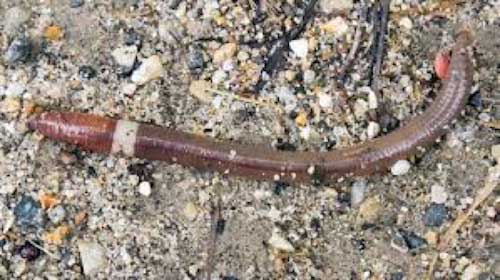Invasive ‘Jumping Worm’ wiggling closer to Orleans County gardens
Press Release, Katie Oakes, horticulture educator for Cornell Cooperative Extension in Orleans County

As more and more people gain interest and skills in gardening, it’s important to be aware of and on the lookout for an invasive worm that has been found in both Erie and Monroe counties.
The “Asian Jumping Worm” is the common name for three different species of earthworms in the Amynthas and Metaphire genera. As the common name suggests, these worms originated in Asia.
There are actually no native earthworms here in Orleans County. The ones we commonly see on rainy days are actually species from Europe, brought over during colonization. These jumping worms pose a greater threat than the European species, however, because they consume organic matter in the soil at far greater rates than the naturalized European species.
This rapid consumption causes big problems for both plant and animal life that relies on healthy soil. Jumping worms leave behind nutrient stripped castings that make it difficult for plants to thrive.
These castings are pretty distinctive in appearance, often being compared to dried coffee grounds. The worms also disturb the soil to such extent that, in heavy infestation areas, the forest floor has actually been dropping due to the diminishing soil organic matter.
The soil disturbance can also encourage an inhospitable environment for vital soil fauna and those that depend on them for survival like salamanders, birds, and other animals. These earthworms can also reproduce without mating, so they can multiply rapidly creating high densities in the soil.
Jumping worms can be distinguished from European earthworms by their behavior and their “clitellum” (the distinct band near the head of the worm). In the jumping worm, the clitellum is often whitish in color and smooth (the European species tend to have raised clitellum that are pinkish-brown in color). The jumping worms will also often have “crazy” behavior, wriggling and thrashing erratically when exposed.
The good news? There have been no confirmed occurrences here in Orleans County yet. You can do your part to keep it that way! Invasive worms are spread exclusively through human activity, so some easy ways to stop the spread include:
- Do not buy or use jumping worms for bait, vermicomposting or gardening.
- Only sell, purchase or trade compost that was heated to appropriate temperatures and duration following protocols for reducing pathogens.
- Clean compost, soil and debris from vehicles, personal gear, equipment, and gardening tools before moving to and from sites.
- Dispose of all live worms in the trash or place them in a bag and leave out in the sun for at least 10 minutes. Then throw bag away.
- Be careful when sharing and moving plants. Always check for worms and know where your plantings come from. Buy bare root stock when possible.
- Check your property for earthworms using a mustard pour (it won’t harm your plants!) Mix a gallon of water with 1/3 cup of ground yellow mustard seed and pour slowly into the soil. This will drive any worms to the surface. If you have jumping worms, report it and avoid moving plants or soil from your yard.
If you think you might have jumping worms on your property, please report them by clicking here. You can also call Orleans County Cornell Cooperative Extension at 585-798-4265 ext. 125 or email klo54@cornell.edu with any questions.







































































